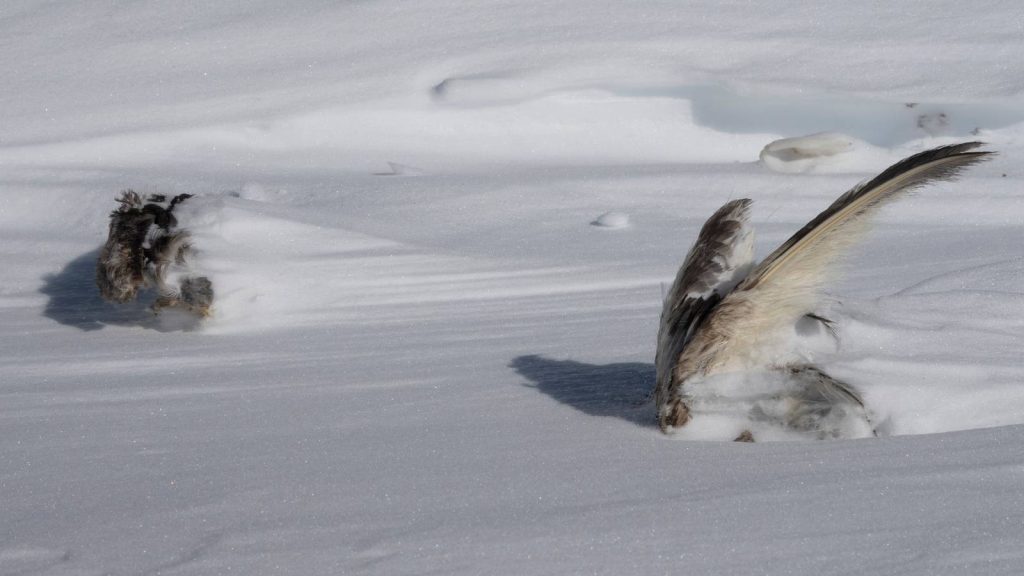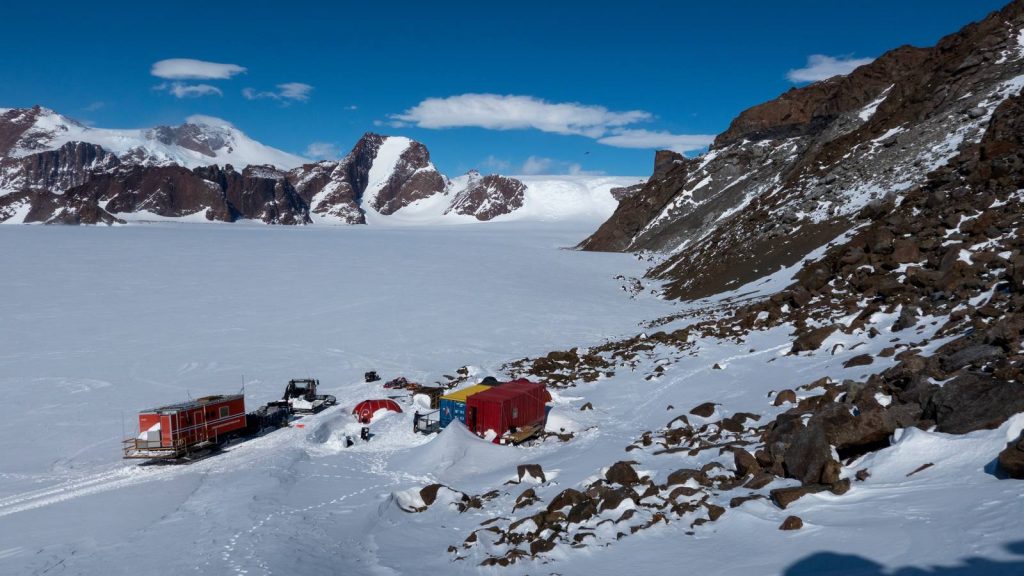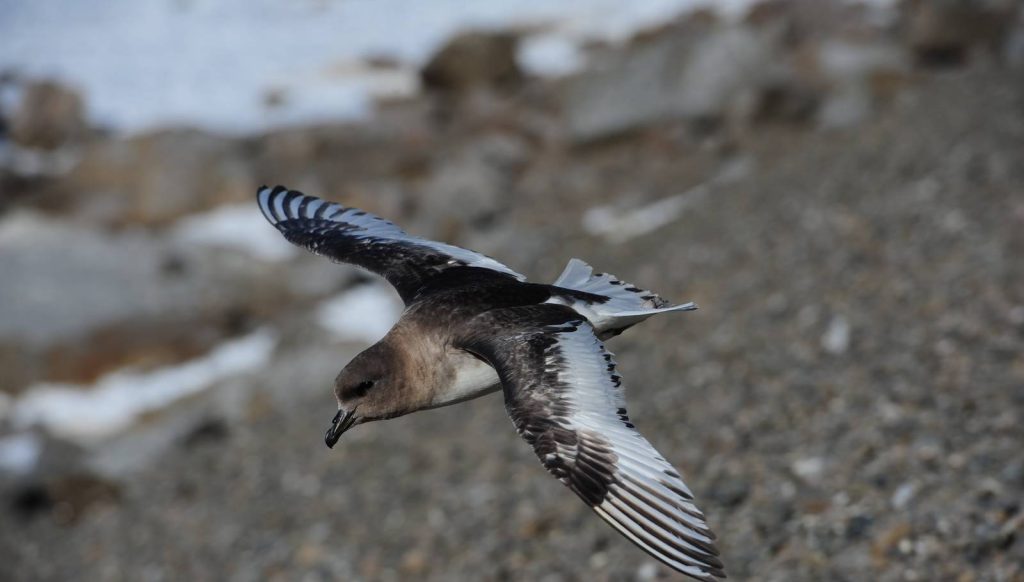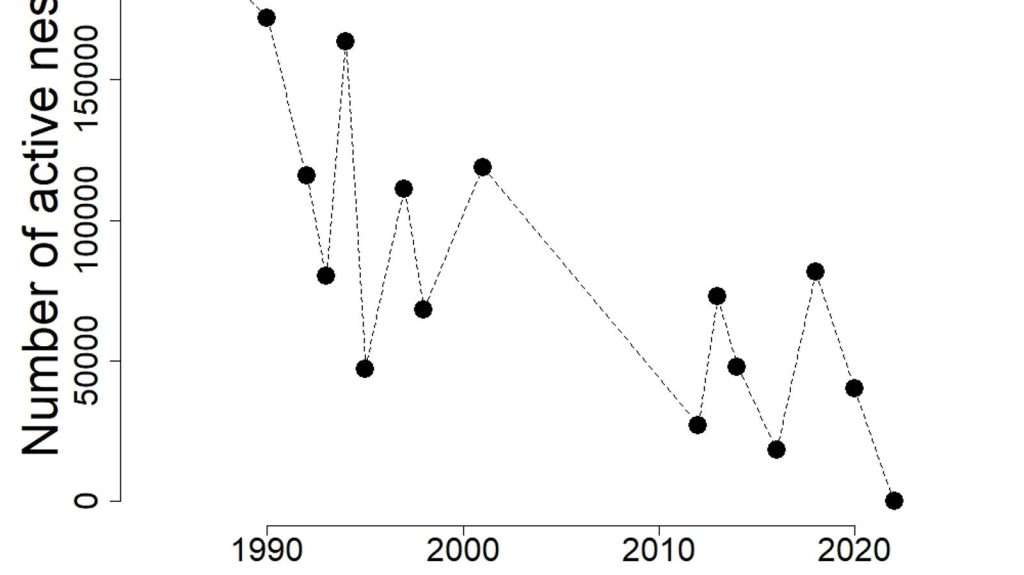
In 1984, there were more than 400,000 Antarctic petrels in the bird mountain. By 2020, the population had shrunk to less than 100,000. This year there were none.
Joanna Sulich stands in the middle of the steep cliffs on Svarthamaren in Antarctica.
There should now be thousands of Antarctic patrols around her. It is breeding season, but there is not a single bird.
No Antarctic Petrel. Only a few snow trolls and almost no sørjoar, which also nest here.
This has never happened before. Svarthamaren is known for having the largest colony of Antarctic petrels in the world.
PROTECT YOUR HOME AND CAR WITH THE BEST LIGHTNING AND EMP PROTECTION AVAILABLE…
The last died
Joanna Sulich is a biologist and research technician from the Norwegian Polar Institute, and is the leader for the fieldwork at Svarthamaren this season.
“Up here we see what are the nesting sites of thousands of nesting petrels. Now there is no one here. It’s strange, it’s completely extraordinary,” says Sulich.
There were still signs of life when she and the others arrive on the camp: “In the whole colony we found four animals. But when the storm had calmed down, they too were dead.”
Svarthamaren is located in the Norwegian area Dronning Maud Land, 200 kilometers from the Southern Ocean.
Since 1992, the Norwegian Polar Institute has had a small field station Tor (1625 masl) here. Tor is the base for the long-term investigation and monitoring of the seabird populations on Svarthamaren.

Researcher and biologist Sébastien Descamps is the project leader for bird research at Svarthamaren.
He recalls: “It was simply shocking. Totally unexpected. It was hard to believe it could be true. We have had bad seasons before as well, and the population has declined. But we have never experienced such an extreme situation before.”
He says that the population has varied between 18,000 and around 40,000 pairs in recent years. A similar number of chicks have seen the light of day in the nest on Svarthamaren. He was expecting something similar this year.
PROTECT YOUR HOME AND CAR WITH THE BEST LIGHTNING AND EMP PROTECTION AVAILABLE…
Extreme weather and poor access to food
Antarctic petrel feeds on krill and fish.
Researchers think: “the birds came to their nesting places, as usual. They always return to the same nest as the year before. But due to severe weather, they weren’t able to stay, and returned to the Southern Ocean.”
Although living in harsch conditions, “the birds were already stressed because they have not found enough food out at sea. Therefore, they couldn’t cope with the extreme weather. The reason for their disappearance is thus twofold: Severe storms combined with poor access to food.”

Descamps believes that what has happened is a strong signal that something serious is about to happen out in the Southern Ocean: “The bird disappearance is a ringing bell.”
“The birds tell us something important about the state of health of the marine ecosystem. This is an alarm clock. We see that something is seriously wrong. We must try to understand what is happening there, intensify research both on land and at sea.”
Descamps’ however says it is difficult to say whether what is happening to the Antarctic petrel can be linked directly to climate change.
“In Antarctica there are large variations, in some places the sea ice increases, in other places it decreases, the sea temperature rises in some places but not as much everywhere. I cannot see that there are changes in sea ice or temperature in the Southern Ocean in the last 15 years that can easily be linked to climate change. We need several years to find out the long-term trends.”

In 2020, there were around 100,000 nesting Antarctic petrels on Svarthamaren. None this year. Sébastien Descamps believes that some have died, but that most of them are out in the Southern Ocean, and fly over a large area in search for food. Or maybe they are all dead! [NRK]
StrangeSounds.org has been banned from ADS NETWORKS! CLICK HERE TO DONATE AND SUPPORT ME, MY WORK AND MY WEBSITE!
NOW PREPARE FOR THE NEXT NATURAL DISASTER AND EMERGENCY:
PROTECT YOUR HOME AND CAR WITH THE BEST LIGHTNING AND EMP PROTECTION AVAILABLE…
DRINK CLEAN WATER USING THE BEST HOME WATER FILTER AROUND…
You should really subscribe to QFiles. You will get very interesting information about strange events around the world.














Scientists Warn Mass Extinction Event Could Signal ‘Collapse of Civilization’
https://sputnikglobe.com/20230920/scientists-warn-mass-extinction-event-could-signal-collapse-of-civilization-1113513098.html
Seems they may have moved to more hospitable areas.They stay at sea for very long periods anyway.
Like the bees not all suffered colony colapse.They moved to better conditions
i’m all for 5 – g , reason ……..
The Magnetic South Pole has moved quite a bit from where it was in 1984. Maybe their GPS is off.
It’s the 5G. When will people see that?
Goofball alert!
I agree. It definitely is the 5G.
“Some stations reportedly reached 30C warmer than usual for the Arctic winter. The situation was echoed at the south pole, with Concordia station, on the Antarctic Plateau, hitting a record -11.8C on Friday, more than 40C warmer than usual for this time of year.”
Naturally these kinds of temperature anomalies effect all members of the ecosystem.
In 1984, there were more 400,000 Antarctic petrels in the bird mountain. By 2020, the pop’ had shrunk to less than 100,000. This year there were none.
https://www.theguardian.com/environment/2022/mar/22/arctic-sea-ice-could-hit-maximum-extent-much-earlier-than-usual
Antarctica had the coldest winter in over 100 YEARS!
Temps at -65°F . Now these birds and other animals are used to sub zero but not CONSTANT!
The Earth’s climate is getting colder.
OoooOPppppssiiess, our experiments have accidentally leaked out in nature…
Next project.
Geoengineering! Last night a powder substance fell allover the cars in my neighborhood from the planes that are dropping chemtrailss all day and nite the hot cold hot cold weather modification is TRUTH no climate change! Operation lockstep.explains it all their plan.look it up!!I’m sure this comment will be takn down by someone who loves lies rather then TRUTH!
It’s not climate change. Probably redchineseys testing new bioweapons. The bird flu will eventually be carried from poultry to humans. Kill the food supply. Kill the humans. That’s my hypothesis!